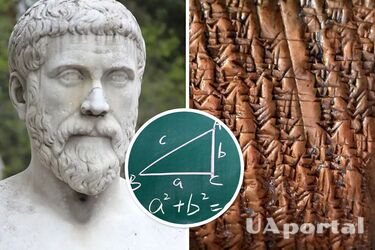Pythagoras' theorem found on a tablet 1000 years older than the philosopher (photo)

Pythagoras, born around 570 BC, was an ancient Greek philosopher and mathematician. He believed that numbers are the basis of everything that exists and that they have a mystical meaning.
Pythagoras' most famous theorem is the right triangle theorem, which states that the square of the hypotenuse of a right triangle is equal to the sum of the squares of the legs. This theorem is one of the most important theorems in mathematics and has many applications in geometry, physics, and other sciences.
Read also: Mathematicians say what sperm and zebras have in common
However, scientists claim that a thousand years before the scientist was born, a similar theorem already existed. They found it on an ancient Babylonian tablet called IM 67118. It carved the "Pythagorean theorem" to determine the length of a diagonal inside a rectangle.

"The tablet, which was probably used for teaching, dates back to 1770 BC," IFLScience writes.
It is noted that the tablet depicts a square with marked triangles inside. This is the number system used by the ancient Babylonians. That is, these ancient mathematicians knew the Pythagorean Theorem and other advanced mathematical concepts.
"The Babylonians knew the relationship between the length of the diagonal of a square and its side: d = the square root of 2," said mathematician Bruce Ratner.
Scientists say that this theorem may have been attributed to Pythagoras because he popularized it.
Earlier, scientists explained why whales play with algae.
If you want to get the latest news about the war and events in Ukraine, subscribe to our Telegram channel!
